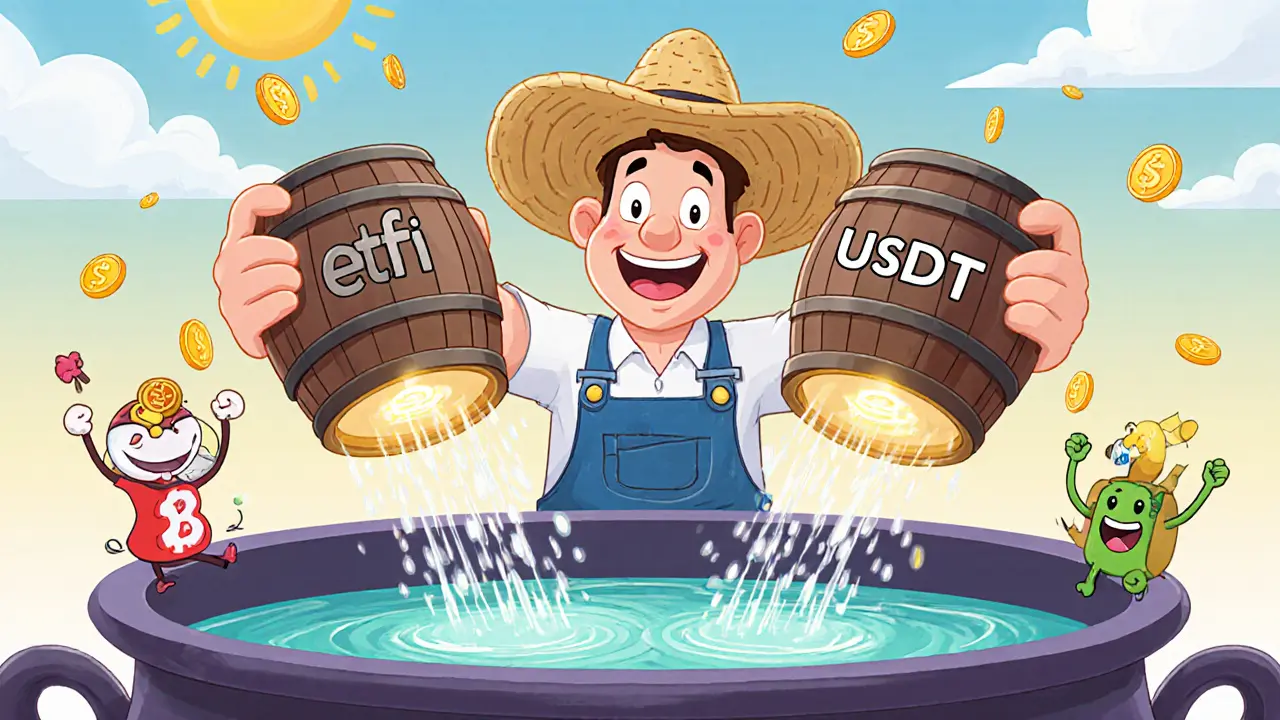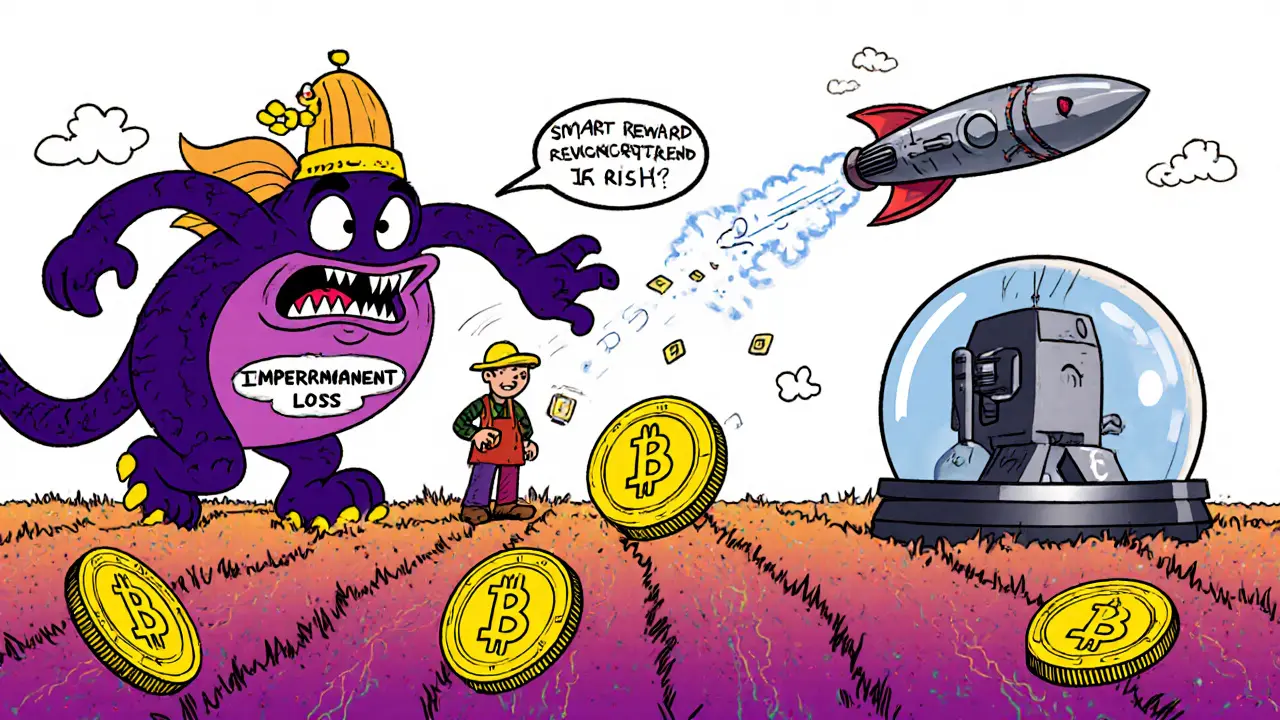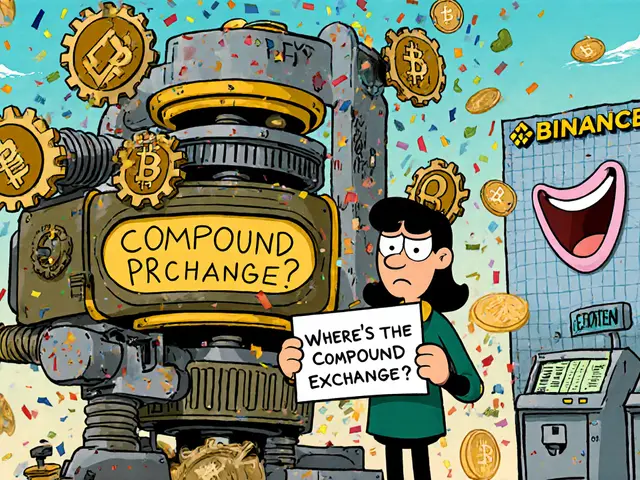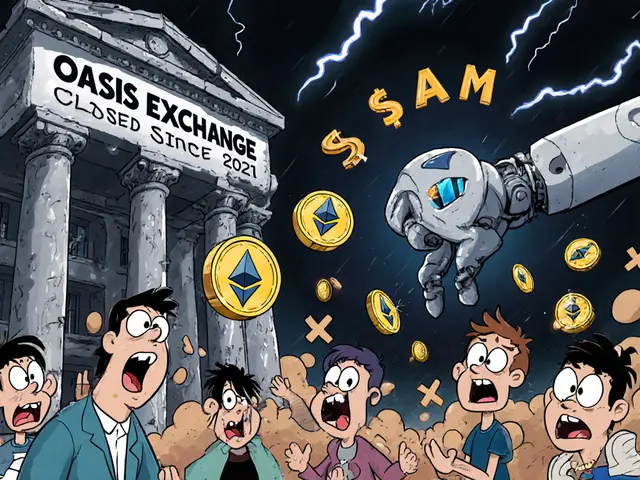
Impermanent Loss Calculator
Calculate potential impermanent loss when providing liquidity to a DEX pool based on price changes. This tool helps you understand the risk of price divergence between your deposited assets.
Impermanent Loss
When price changes occur
Hold Strategy
You'd still hold your original assets
Liquidity Pool
Your liquidity position
Imagine earning crypto just by letting your tokens sit in a pool while traders swap assets around you. That’s the promise of two popular DeFi strategies: Liquidity Mining is the practice of supplying paired assets to a decentralized exchange’s liquidity pool and collecting a share of the trading fees plus any extra protocol incentives and yield farming, a broader hunt for the highest Annual Percentage Yield by hopping between protocols that hand out extra rewards.
What Exactly Is Liquidity Mining?
When you join a liquidity pool, you deposit two tokens of roughly equal value-say ETH and USDT-into a smart contract. In return, the protocol mints Liquidity Provider (LP) tokens that represent your slice of the pool (you can later redeem them for your original assets plus any earned fees). Every time a trader swaps ETH for USDT, a small fee (usually 0.3%) is routed to the pool and split among all LP token holders. Many platforms also sprinkle additional Governance tokens like SUSHI, CRV, or UNI on top of the fee revenue, turning the pool into a mini‑mining operation.
What Exactly Is Yield Farming?
Yield farming is a strategy that moves assets across multiple DeFi contracts-lending platforms, DEX incentives, or automated yield aggregators-to chase the highest APY at any given moment. Instead of staying put, you might lend DAI on Aave for interest, then stake the same DAI in a Curve pool that hands out CRV tokens, then feed the earned CRV into a Yearn vault that auto‑compounds. The core idea is simple: lock capital where the reward rate is highest, even if that means re‑balancing every few days.
Core Mechanisms Compared
| Aspect | Liquidity Mining | Yield Farming |
|---|---|---|
| Primary Goal | Provide paired assets to a DEX pool | Maximize APY across protocols |
| Typical Rewards | Trading fees + protocol‑issued governance tokens | Interest, extra token incentives, auto‑compounded yields |
| Risk Profile | Higher impermanent loss risk, pool‑specific smart‑contract risk | Multi‑protocol risk, frequent re‑allocation risk, gas costs |
| Management Intensity | Set‑and‑forget (but monitor pool health) | Active monitoring, weekly or even daily adjustments |
| Core Platforms (2025) | Uniswap V3, SushiSwap, Curve Finance | Yearn Finance, PancakeSwap, Aave, Beefy, Abracadabra |

Reward Structures in Detail
Liquidity mining rewards are two‑fold. First, the pool generates fees proportional to the volume traded. Second, many protocols allocate a portion of their native Governance token (e.g., SUSHI, CRV, or UNI) to LP token holders. These tokens can be sold, staked for additional yields, or used in on‑chain voting.
Yield farming, on the other hand, turns every step into a potential reward source. Lending platforms like Aave pay interest in the underlying asset. Some pools add a “boost” token that can be claimed in addition to the base interest. Aggregators such as Yearn automatically move assets into the highest‑yielding vaults, then compound the earnings each block. The result is a layered reward stack that can push APYs into triple‑digit territory-though those numbers often include newly minted tokens rather than pure economic value.
Risk Profiles You Can’t Ignore
Both strategies share the classic DeFi trio: Impermanent loss the divergence loss incurred when the price ratio of the pooled assets shifts, Smart‑contract risk bugs or malicious code that can drain funds, and market volatility. Liquidity mining amplifies impermanent loss because you’re locked into a specific pair; a sudden price swing in one token can erode your capital faster than simply holding.
Yield farming adds another layer: protocol hopping. Every time you move funds, you expose yourself to a new contract’s audit status, new governance changes, and potentially higher gas fees. Some farms also run “rebasing” tokens whose supply adjusts daily, which can confuse accounting and tax reporting.
How Much Management Does Each Strategy Demand?
If you prefer a set‑and‑forget approach, liquidity mining feels more comfortable. After you deposit ETH/USDT into a Uniswap V3 concentrated liquidity range, you can sit back and watch the fees accrue-just keep an eye on the pool’s utilization and the token’s price drift.
Yield farming is more of a sprint. Successful farmers check dashboards multiple times per week, zap assets into the next highest‑yielding vault, and sometimes use “poly‑strategies” that nest a farming position inside another farm. Tools like Yield aggregators automate the re‑balancing logic, reducing manual steps but still requiring periodic review have lowered the barrier, yet the underlying complexity remains.

Choosing the Right Approach for Your Goals
Here’s a quick decision matrix:
- Goal: Steady fee income with predictable exposure - Go for liquidity mining on high‑volume pools like ETH/USDC on Uniswap V3.
- Goal: Chase the highest APY, tolerate frequent moves - Dive into yield farming using Yearn vaults or Beefy strategies.
- Risk tolerance low - Stick to well‑audited pools on Curve Finance, avoid exotic rebasing tokens.
- Risk tolerance high - Experiment with newer incentives on emerging L2 DEXs, where reward rates are aggressive but contracts are newer.
Remember that both strategies benefit from diversification. Splitting capital across a few stable pools and a modest farming position can smooth out returns while keeping risk in check.
Future Trends Shaping Both Worlds
Layer‑2 solutions like Optimism and zkSync are slashing gas fees, making frequent farm swaps cheaper. Meanwhile, Uniswap V3’s concentrated liquidity is letting providers allocate capital to narrower price ranges, reducing impermanent loss risk if price stays within that band.
Yield aggregators are adding AI‑driven prediction models to forecast which incentives will decay soon, allowing farms to exit before the APY collapses. On the governance side, many protocols are moving from pure token emissions to fee‑based reward models, which could make APYs more sustainable in the long run.
Quick Takeaways
- Liquidity mining supplies paired assets to DEX pools and earns fees + governance tokens.
- Yield farming jumps across protocols to capture the highest APY, often using auto‑compounding vaults.
- Liquidity mining tends to have higher impermanent loss but lower operational complexity.
- Yield farming offers higher potential rewards at the cost of active management and multi‑protocol risk.
- Layer‑2 scaling, concentrated liquidity, and smarter aggregators are narrowing the risk‑reward gap.
Frequently Asked Questions
Can I do liquidity mining and yield farming at the same time?
Yes. Many users allocate a portion of their portfolio to a stable liquidity pool for steady fee income, while the rest chases higher yields in farming vaults. Just keep track of the total exposure to avoid over‑leveraging.
How do I calculate impermanent loss for a liquidity mining position?
The basic formula is 2×√(P)/(1+P)-1, where P is the price change ratio of one token relative to the other. Several DeFi calculators (e.g., Curve’s IL calculator) let you plug in the numbers to see the % loss versus holding the assets outright.
Are there tax implications for earning LP tokens or governance rewards?
In most jurisdictions, every time you receive a token-whether a fee distribution, LP token, or governance reward-it’s considered taxable income at the fair market value on receipt. When you later sell or swap those tokens, you incur a capital gain or loss based on the difference between sale price and the recorded basis.
What are the safest platforms for a beginner?
Start with well‑audited, high‑TVL pools on Uniswap V2/V3, SushiSwap, or Curve. For farming, Yearn’s stable‑coin vaults (e.g., yUSDC) provide an automated, low‑maintenance entry point. Always check the latest audit reports and community sentiment before committing.
Will the high APYs we see today last?
Often not. Many ultra‑high APYs are driven by fresh token emissions that decay over weeks or months. Sustainable yields usually come from fee‑based models or stable‑coin lending rates, which are lower but more predictable.





